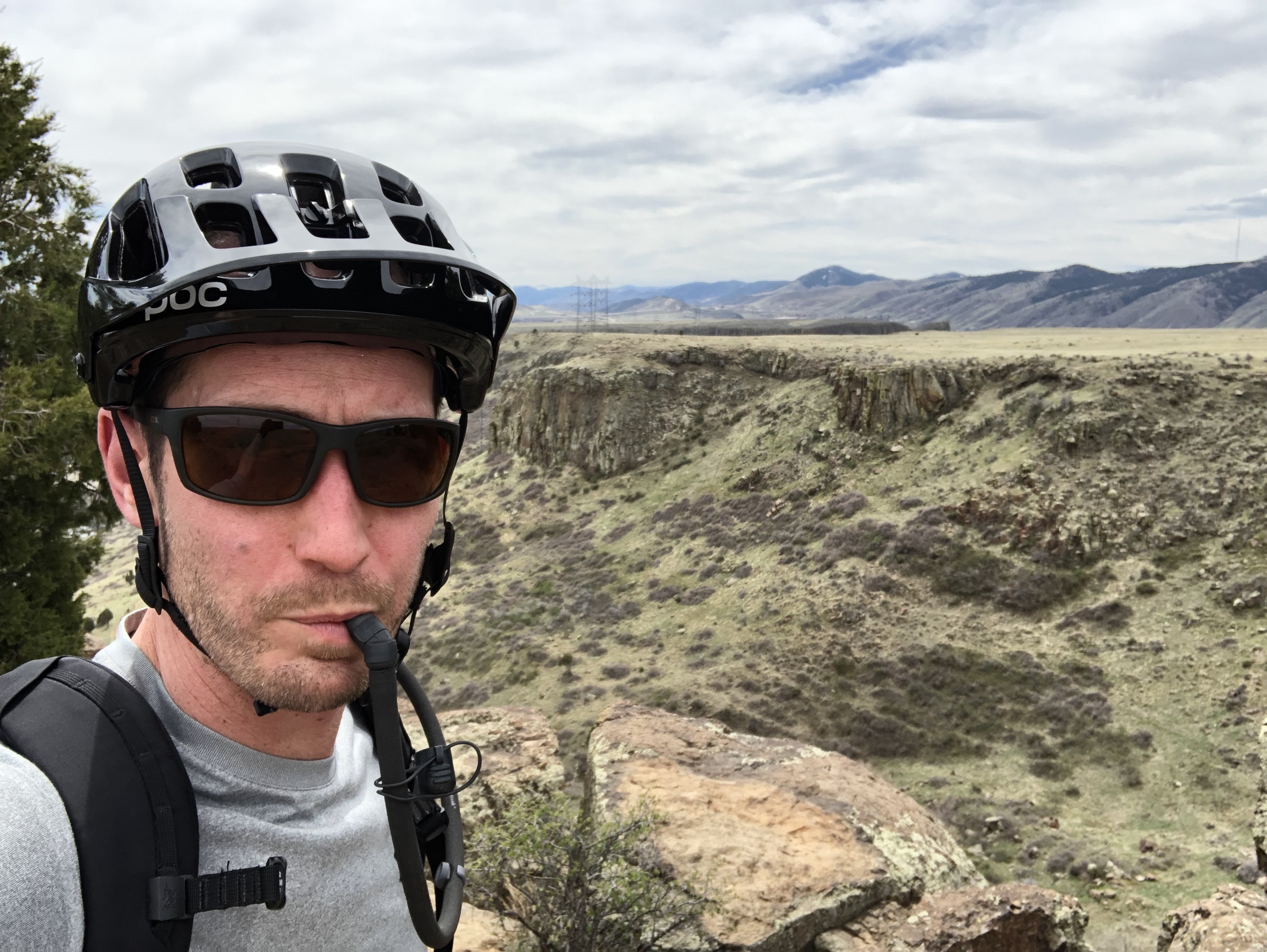
Since moving to Colorado, I’ve been lucky enough to get out mountain biking pretty frequently. I love it. On some rides you’re just trying to get up or down the mountain in one piece, but on some rides you get good time to think quite deeply. On a recent ride I was rolling around (pun intended, you’re welcome) some ideas about engineering management, and realized there are some good parallels between mountain biking and leading teams of engineers.
Look Out Ahead
When you’re riding single track, it’s really common to have your eyes glued to the trail right in front of your wheel. Big mistake. Not only does it mean that you’re going to be constantly reacting and trying to respond to things as they appear right in front of you, but it also means that you’re not going to have any advanced warning of big changes ahead. Like a tight turn. Or fast descent. Or a jump/drop-off.
Instead of staring right in front of your wheel, you should keep your eyes further out ahead. This gives you more time to react, some time to pick your line, and the ability to adjust your approach as needed by speeding up, slowing down, changing your stroke on the pedals, or even just bracing for impact 😉
With engineering teams, if you’re heads down responding to the things right in front of you, you’re going to be in that same reactive position, and things will constantly take you by surprise. Take some time to not only plan out ahead, but forecast and “game out” what the future might hold. Will you need to hire more people soon? Adjust team structure? Train your people up in some specific skill? Transfer knowledge between key people? If you’re not looking ahead, these things can catch you by surprise, and become a much bigger issue than they needed to be.
Build Momentum
When you’re on a really gnarly section of technical trail, it’s all too easy to slow right down and find yourself picking your way through rocks and bumping across things uncontrollably. As counter-intuitive as it sounds, it’s often better to speed up and keep moving than it is to slow down and try to delicately navigate every little obstacle. You can end up feeling like a bit of a steamroller, skimming over the top of everything, but you end up with a smoother ride, and it’s a whole lot more fun than bumping and grinding through every rock in your path. Instead of slowing down and being overly cautious, a common refrain is “let it roll”, meaning don’t brake, just roll through the obstacles using your momentum (and then quickly move on to the next one).
Something similar can be said for engineering teams, who benefit from building and maintaining momentum in their work. Get in the habit of shipping, and always protect that habit. Don’t slow right down and get stuck in the details. If you adopt an extremely slow and overly-cautious approach to shipping, then you can quickly find yourself in a state where you’re not shipping at all. Once shipping becomes a habit, that momentum is easier to maintain and build upon, to continue increasing your velocity.
Find Your Velocity
As a balancing point to the previous one, it’s also important to find the right velocity. On a mountain bike, if you go too slowly, you’ll have a rough ride, experience every bump and rock, and probably not enjoy yourself much. If you go too fast, well, there are plenty of YouTube videos to show you what happens. You need to find a pace where you’re making good progress, but you’re not completely out of control. It’s probably a little faster than you think it is, so you should push yourself and really find your limits.
If you’re moving too quickly as an engineering team, it probably means you’re shipping sloppy work, failing to validate ideas, accumulating a ton of technical debt, or just plain old rushing things. Find a sustainable pace where you can deliver quality work, without burning people out, and without shipping junk. That being said, moving too quickly is rarely a problem with engineering teams, so remember that speed matters, and always push to move as quickly, but sustainably, as possible.
I’m sure there are more parallels to be explored, but these were the only ones that came to me before I hit the more technical section of the trail, and had to really pay attention!
